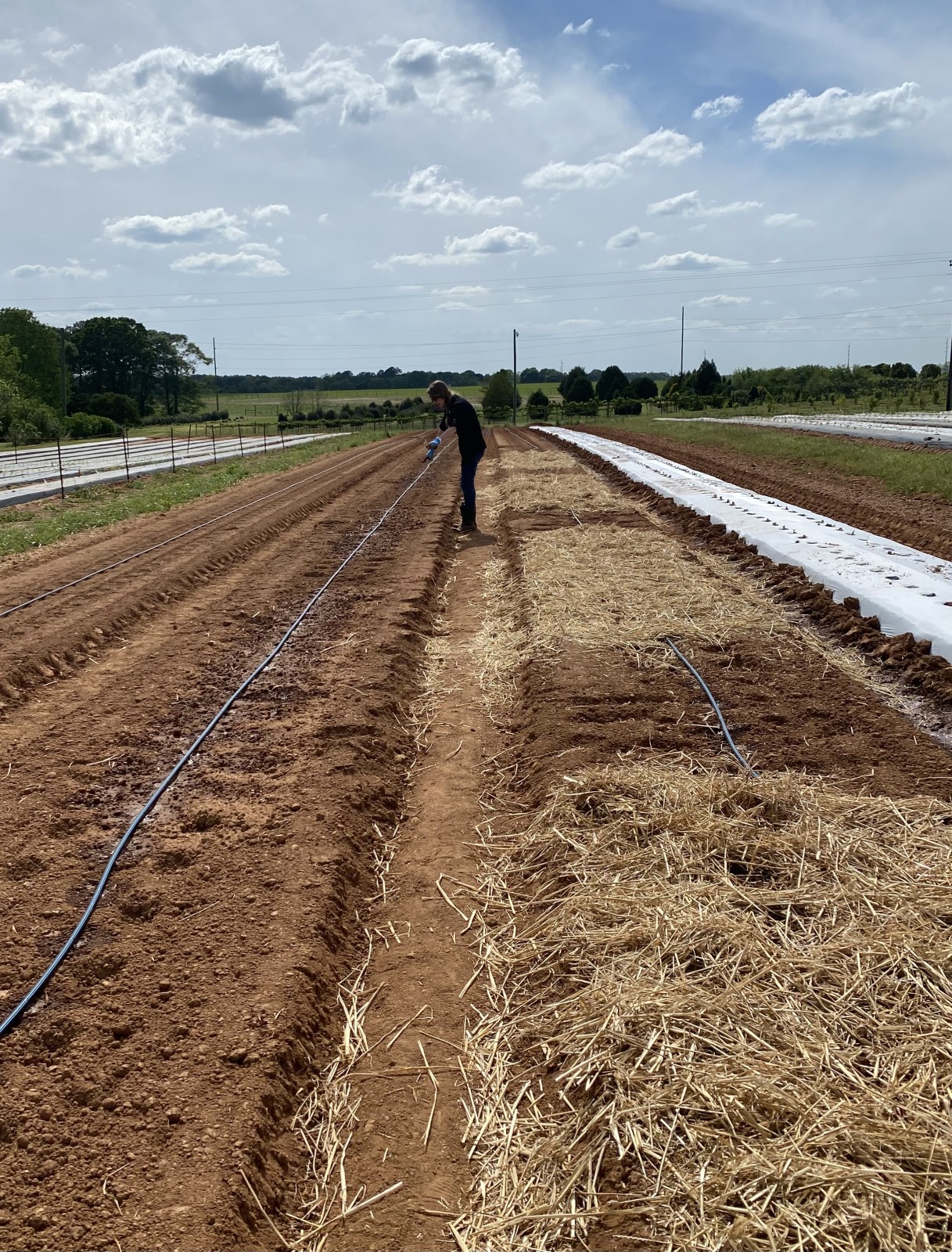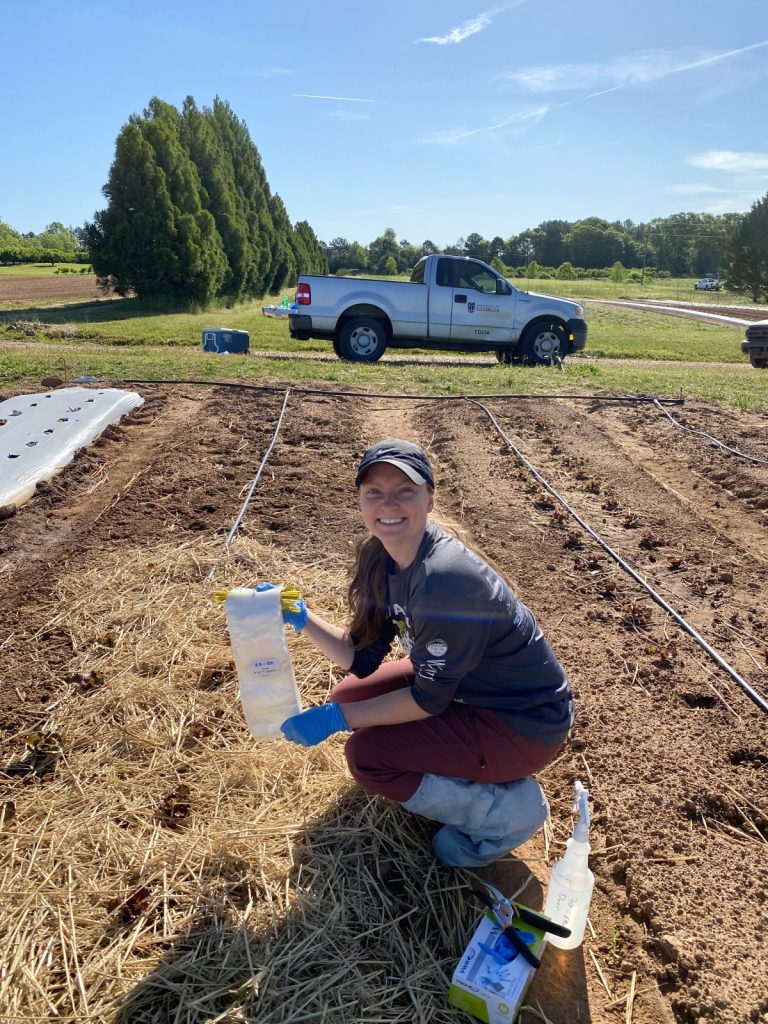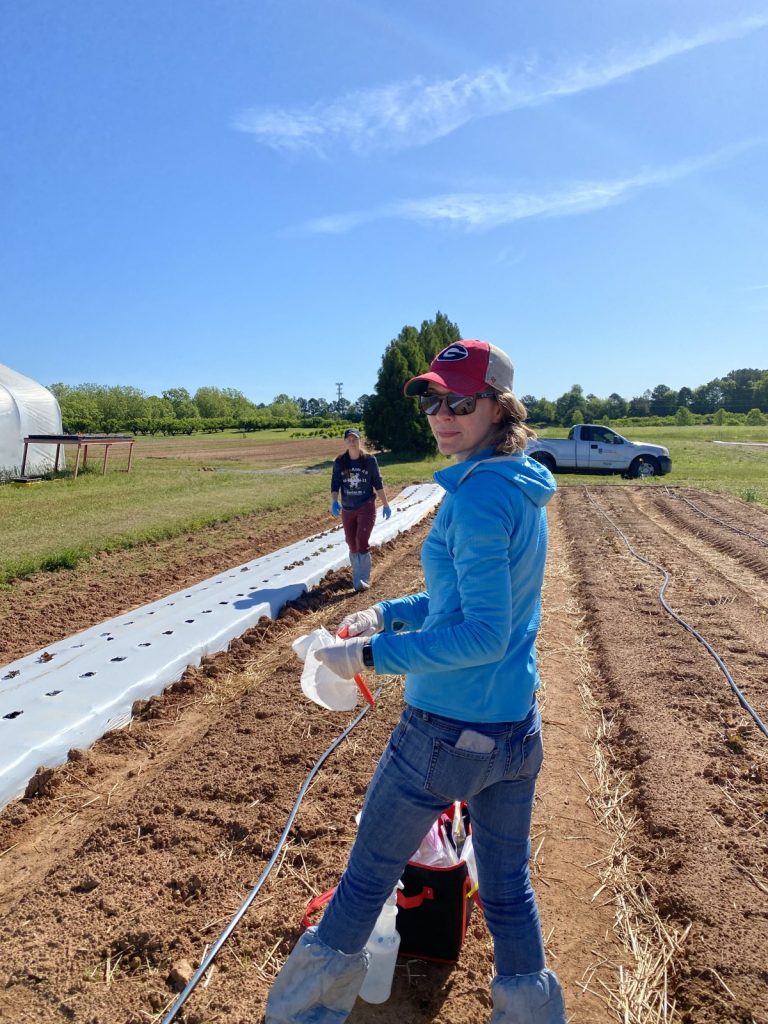Most people familiar with Extension Food Science and Technology know us for the technical services we provide the food industry, or the trainings we offer food safety managers and entrepreneurs.
But did you know our specialists, staff, and students also conduct research to support the food industry?


Over the years, several outbreaks of Escherichia coli O157:H7 (E. coli) have been linked to contaminated romaine lettuce or spinach. This foodborne pathogen causes diarrhea (which may often contain blood) and severe abdominal cramps and can be particularly dangerous for young children.
As part of a multi-state project led by the University of Florida, our team is joining forces with collaborators at the University of Maryland to examine one possible way that romaine lettuce (and other leafy greens) might get contaminated during lettuce production: wild animals.
If an animal enters and defecates in a produce field, produce growers avoid harvesting around the manure in case any bacteria are able to spread to produce. However, we don’t know how far bacteria from manure can spread, so it’s difficult to determine at what distance it is safe to resume harvesting. While too small of a distance may increase the likelihood of bacterial contamination, too large of a distance from a fecal deposit results in a lot of wasted produce. So, this spring the Dunn lab is studying just how far bacteria can spread in a lettuce field. We’re still in the middle of this trial, but we’ll be sure to provide updates as we continue to collect our data.
